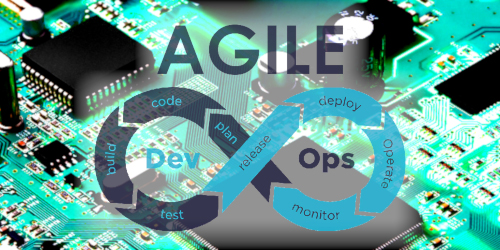Check out my YouTube Channel: Power Operational Intelligence
Now Live! Overview, Structure, Task Data, Table Design, SQL Server, and Re-Linking now showing.
Video courses covering material on this website, and more, are presented in the playlists.
Code snippet links at YouTube Code Snippets. Twitter at @poweroperation1, #poweropi, #poweroperationalintelligence.
Subscribe on YouTube, and click the "Notification" Bell icon to be notified as content is published.
Collected PowerOpI Posts on Silicon Valley Project Management

Managing Complex ProjectsRichard Bixler Summary: Discussions of Agile describe non-Agile methodology as the evil "Waterfall" - but that's not how non-Agile-Methodology projects are really managed, or why. Would you like to broaden your skill portfolio and understand how it's really done? Published originally on svprojectmanagement. Complex ProjectsI'm one of those people who has taken on Program Management of some big projects in Silicon Valley, cross-functional, with distributed organizations and partners, and complex functionality. Agile methodology can deal with some program elements, but not the whole program. So, how to manage such a program, how to coordinate multiple methodologies, including Agile? These programs incorporate components including electronics and mechanicals; firmware, diags, drivers, kernel, management; streams, transports and storage, and in some cases end-user functionality. New technology introduced in hardware and software, incorporating software and hardware from internal orgs, partners, consortia, and open source. Bringing up Supply Chain and Manufacturing Test, onshore then offshore, concurrently with product development. Release to mass production, with field and analyst support for hardware and software. These projects include not just design but also material logistics. There are plenty of efforts like this, spanning every dimension of the range I've described. The projects I've program-managed spent visible money, and had to be concerned about planning the spends. The kind of spending that must commit to adequate return, and competes continuously with other internal organizations for funding, quarter-by-quarter. Companies still have fiscal-year budgets and quarterly reporting - I assure you that somebody in the organization is making a bet on time and spend. Competition is both internal and external: We need improved features, and more features, as technology advances; and we compete in time against other companies with equally aggressive plans and competing products. Butts are on the line for this. It takes up-front and continuous planning, and continuous effective execution to make such efforts successful. Moore's Law, technology lifecycles, and competition mean schedules are never easy to meet so we have to effectively plan sequencing, dependencies, deliverables. And then there's change: design changes may affect sequence; new EU standard imposed; suppliers ship partial deliveries, materials are long-lead and late. Validation and certification processes find defects, features are added. And yet time and spend remain critical. So the answer is always to find ways to mitigate problems-found and stay on track. Contrary to the many articles I see, projects like mine aren't planned up front, static, inflexible and fixed: The ones I've worked on are massively dynamic and require constant plan updates and attention to execution detail. Cross-functional projects like these concurrently coordinate several different project methodologies to achieve synchronized result. Agile methodology can be a component of these projects but it's never the only one. Agile works above a "virtualization layer", but doesn't handle Supply Chain, spend, or physics of hardware technologies. So the program manager must integrate multiple methodologies. So I've pretty much stated the problem that I deal with repeatedly. And it's quite possible to drive through all that, to complete and successful products. Needless to say, there are methods needed to make this work. I've been a designer, a manager from low- to high-level, and a Program Manager; I'm concentrating now on Program Management. I've developed methodologies and tools for efforts as I've described, and write about them on svprojectmanagement.com. I'll also provide software tooling for Program Managers of such projects: a free demo Framework using Power Query, scalable to handle efforts of the size I've managed and described above. The Framework is available in other environments and I have to charge for those. But the Demo is free and fully functional for many projects; I'm not here to sell software. My purpose on this Site will be to describe to other Program Managers how I've managed complex projects, and to provide tooling to those who can use it. I hope both of those avenues will be useful to you. (my website: www.softtoyssoftware.com). Further Reading: Core Program Quantitative Structure for System ProgramsAdvice for Program Managers: The Blog Series1-Program Management Opportunity Introduces a vision and framework for development of Program Managers and PMO, for Program Management specialization to its environment, and for improved effectiveness and integration of PM with organization operational management. 2-Program Management Career Path Describes career path thinking for Program Managers including sourcing, progression, advancement, and connection with organizational management. 3-Program Management Career Skills Career path thinking for Program Managers including skills and behaviors that develop Program Manager capabilities and leadership and pave the way toward advancement. 4-Program Management Specialization: System Programs Phased Methodology PM Best Practices and Core Program Structure for Hybrid integrated system programs using Phased HW – Agile SW, mixed-technologies. Full-Program agility via automated plan tools with continuous plan update. The Series also solicits contributions to this Blog site, to extend coverage of PM Best Practices and Core Program Structure to a broadening set of Specializations. PMO behavior to achieve Program Management effectiveness specialized to its environment managing PM practices in the organization, including PM development and advancement and connection with organizational management. 6-Quantified Agile for Hardware Program Quantification applied to Phased and Agile methodologies to deal with organizational quantitative requirements. More Articles by this AuthorThree Levels of Program Management Guiding Principles for Program Management Action, Program Quantification, and Leverage Through Tooling. Organizing Program Communication Program Management depends on effective communication. Design Program communication paths for everyone throughout the Program. Database Platforms for Program Management Logistics Logistics Tool extended, using SQL Server and MS Access with MS Excel and PowerQuery. Logistics Tool using MS Excel Power Query. Tool methodology for agility with continuous plan update: Program BOM, Tie to Dates, Builds, Element data. Structure Program with Parallel Phasing. Describes coordination of EE/ME, FW, Test, Supply/CM, Driver/Kernel, Transport, Management. Scheduling, Integration points, scaffolding, and starting work. Hybrid Program Cross-Domain Coordination of development frameworks, including Phased and Agile/Scrum where appropriate, via integration points and scaffolding. Software Integration Sequence and Dependency Planning. Problem Statement. PM responsibility for Program Management drive throughout an organization, also includes schedule, budget, integration, critical path, logistics. Planning work structure for a Program, and using the plan effectively. AI effects on current and future lifestyles. Personal strategies for proactive and defensive use of AI. Using Iterative Thinking to solve big problems and complex logistics. PM/PMO role identifying, evaluating, and propagating AI Best-Practices through an organization. Link To Free Tools To Manage Schedule, Logistics, And FinanceAuthor's www.softtoyssoftware.com website with articles on Program Management and Program quantification tooling using Excel, MS Project, and MS Visio with SQL databases PowerQuery, SQL Server, and MS Access. Articles describe how you can use tools available from the website, or develop these capabilities yourself using commonly available tools. Tools available from this website are free. They can handle small to large programs, limited only by your imagination. Using the included Program Template to envision, organize, plan, and run a large program puts me in mind of unleashing a Roman Legion to a sure outcome. Veni, Vidi, Vici! – Julius Caesar.
Credits Image(s) used under license from Shutterstock.com. Attribution: alvov / Shutterstock.com My website: www.softtoyssoftware.com Copyright © 2020 Richard M. Bixler All rights reserved |


















